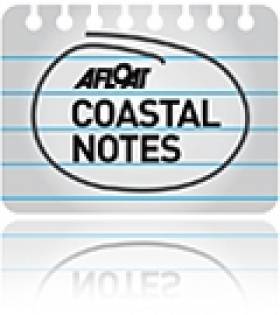Displaying items by tag: Geological
Uncharted Rocks & Revised Depths Round Ireland
#unchartedrocks – The survey ships of the INFOMAR project – the Marine Institute's Celtic Voyager and the Geological Survey's Keary, Geo and Cosantoir Bradan – have been busy recently, and a lot of previously uncharted rocks have now been surveyed and notified to the UK Hydrographic Office for inclusion on the charts writes Norman Kean of the Irish Cruising Club. A couple of known rocks have also had their depths revised shallower, and would now be recognised as a significant hazard to small craft.
The most important new discoveries are these (Admiralty Notices to Mariners numbers in brackets):
• Rock with 2m, 2 cables off Rush Bay (1381/2014)
• Rock with 1.2m, 2 cables east of Loughshinny pier (1381/2014)
• Rock charted at 3.4m, north-east of the Fastnet, re-surveyed at 2.2m (0496/2014)
• Rock with 0.8m, halfway between Colleen Og Rock and the shore, at Dingle
• Numerous rocks around Inishskinny and south of Inishbofin (2672/2014)
• Rock with 1.5m, 2 cables south-east of Knife Rock, at Benwee Head in Mayo (3994/2014)
• Ballyhiernan Rock, west of Fanad Head, resurveyed from 3.4m to 1.7m (2620/2014)
The leisure sailing community has also made its contribution. A rock with 0.1m was discovered in Crookhaven Harbour in July by the crew of the yacht Eleanda (3645/2014). Fortunately she didn't hit it, but when they looked over the stern at low water on their anchorage, there it was, lurking a metre down. And very, very solid.
Not every change has been for the shallower – Limeburner Rock, off north Donegal, has had its depth revised from 2m to 3.5m.
It may be true that the rocks don't move, but the ever-increasing accuracy of the charts means that our knowledge of their existence, position and depth is constantly improving. Don't assume that your chartplotter package will pick this up automatically – it's best to check. The relevant Notices to Mariners can be found on www.ukho.gov.uk.
























































